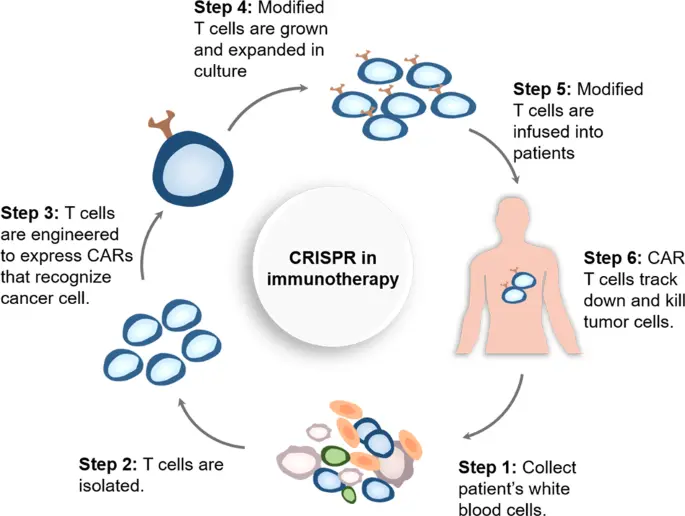Introduction: The Science That Looks Like Sci-Fi
Once a concept confined to science fiction, genes editing in humans is now inching closer to reality. With technologies like CRISPR making headlines, people are left wondering: Can we really reprogram human DNA? Could this unlock cures for genetic disorders or even extend life? Break through the hype around CRISPR gene editing. We’ll look at actual scientific developments to see if this technology’s future is already a reality or still a distant possibility.
What is Gene Editing?
At its core, gene editing is the ability to make precise changes to the DNA in living organisms. Think of DNA as the instruction manual for your body. Genes editing in humans involves rewriting parts of that manual—fixing typos, deleting harmful sections, or even inserting new ones. This is made possible by gene-editing tools, the most famous of which is CRISPR.
CRISPR: The DNA Scissors Changing the Game
CRISPR stands for Clustered Regularly Interspaced Short Palindromic Repeats. It’s a naturally occurring system that bacteria use to defend against viruses. Scientists have adapted it into a powerful gene-editing tool.
So how does CRISPR gene editing work?
Imagine you could use a word processor to find and replace faulty sections in your DNA. That’s essentially what CRISPR does. A protein called Cas9 acts like scissors, cutting out specific sections of DNA, which can then be altered or replaced.
The power of genes editing CRISPR lies in its accuracy, efficiency, and low cost compared to older methods. It’s already been used in research labs worldwide and is now being tested in clinical trials.
Is It Really Possible to Edit Genes in Humans?
Yes, but with limits, Every Country Has there Own Rules and Regulation For Genes editing in Humans.
What Has Already Been Done?
- In 2017, scientists used CRISPR to correct a genetic defect in human embryos.
- In 2020, a patient with sickle cell anemia was successfully treated using genes editing CRISPR.
- China made global headlines in 2018 when a scientist claimed to have created gene-edited babies, sparking a massive ethical backlash.
What’s Still Not Possible (Yet):
- Editing genes in adults safely and consistently without side effects.
- Targeting complex traits like intelligence or personality.
- Preventing unintended mutations (off-target effects) from editing.
So while genes editing in humans is possible in theory and sometimes in practice, it’s still very much in development.
Source: nature.com
Potential Benefits of Gene Editing
- Curing Genetic Diseases: Diseases like Huntington’s, cystic fibrosis, and sickle cell anemia are caused by single gene Change. Genes editing CRISPR could fix these at the source, potentially curing patients rather than just treating symptoms.
- Personalized Medicine: CRISPR might allow doctors to customize treatment based on a person’s genetic makeup, opening the door to precision medicine.
- Preventing Inherited Disorders: By editing embryos, certain genetic disorders could be eliminated before birth. This raises both hope—and ethical questions.
- Ethical Concerns: Just Because We Can, Should We? Whenever we talk about genes editing in humans, the ethics follow closely.
Concerns Include:
- Designer Babies: What if gene editing is used not just to cure disease, but to enhance beauty, intelligence, or athleticism?
- Inequality: Will this tech only be available to the wealthy?
- Consent: Can an unborn child consent to genetic changes?
Experts argue we need strict regulation, transparency, and global guidelines before genes editing CRISPR becomes common practice.
Regulatory Landscape: Where Does the Law Stand?
Different countries have different rules:
- USA: CRISPR research is allowed, but editing embryos for implantation is banned.
- UK: Research on embryos is allowed under strict conditions.
- China: Looser regulations have led to faster developments—and more controversies.
As genes editing in humans becomes more viable, governments are racing to update laws to balance innovation with safety and ethics.
Challenge Opportunity:
Off-target effects: CRISPR might edit the wrong part of DNA, causing unexpected side effects. Immune responses: Our bodies might reject CRISPR treatments. Long-term effects: We still don’t know what edited genes will do decades down the line. That’s why scientists stress caution, even as progress speeds up. Future of Gene Editing: What’s Coming Next? Despite the unknowns, momentum is growing: Companies like Editas Medicine and CRISPR Therapeutics are running human trials. CRISPR 2.0 (more precise versions) are already being developed. Researchers are exploring editing RNA, not just DNA, for safer outcomes. The dream of a world where genes editing in humans cures disease, enhances life quality, and prevents suffering may not be so far-fetched after all.
Conclusion:
So, is genes editing really possible? Absolutely—and it’s already happening. But like all powerful tools, it needs to be handled with care. While the promise of CRISPR is enormous, we must navigate this landscape thoughtfully. With smart regulation, global cooperation, and ethical oversight, genes editing CRISPR could reshape human health for generations to come.


